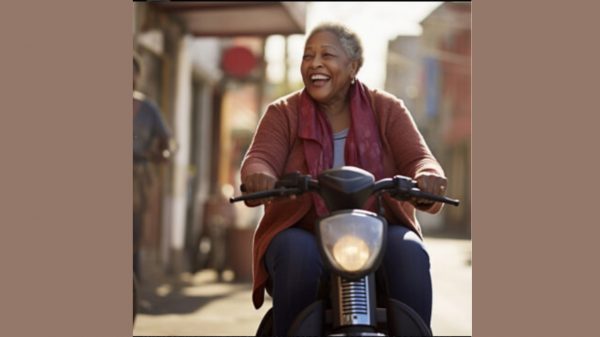Living in a bustling city shouldn’t limit anyone’s independence. For many urban residents with mobility needs, the right mobility scooter can make the difference between feeling restricted at home and confidently navigating busy streets, shopping centres, and public transport.
The specific demands of city life – from navigating kerbs to managing tight spaces in shops – require careful consideration when selecting a mobility scooter. If you’re considering compact boot scooters for quick errands or robust 8mph models for longer journeys, knowing how different designs perform in an urban setting helps ensure you choose a scooter that truly fits your daily routine.
Navigating Urban Spaces: Mobility Scooters for City Dwellers
Recent statistics from the Department for Work reveal that approximately one in five UK adults experiences mobility limitations, with higher prevalence rates in densely populated urban communities. The challenges of navigating cities like London, Birmingham, and Manchester with mobility restrictions extend beyond simple transportation. Uneven pavements, high kerbs, crowded shopping areas, and limited access to public buildings create daily obstacles that can significantly restrict independence.
Modern mobility scooters address these urban challenges through designs specifically engineered for city environments. Many current models feature tight turning radiuses of less than one metre, allowing users to navigate narrow shop aisles or crowded pedestrian zones. Responsive controls with variable speed settings help manage different terrains, from smooth shopping centre floors to textured pavement surfaces.
The 2023 NHS report on Mobility and Mental Health found that individuals who maintained independent movement through assistive technology reported 43% higher satisfaction with their quality of life compared to those who became homebound due to mobility limitations. This psychological benefit manifests in reduced depression rates and increased social engagement, highlighting how mobility scooters serve far beyond basic transportation needs.
The Evolution of Disability Scooters: Beyond Clinical Appearance
The disability scooter market has undergone a remarkable transformation in recent years, moving away from clinical-looking medical equipment toward stylish mobility aids that complement modern urban lifestyles. No longer restricted to institutional beige or medical white, today’s mobility scooters come in sleek designs with customisable panels, contemporary colour schemes, and ergonomic features that blend function with fashion.
Technological innovations have dramatically improved the practical aspects of these vehicles. Lithium-ion batteries, once exclusive to premium models, now provide extended range capabilities of up to 30 miles on a single charge while reducing overall weight by up to 40% compared to traditional lead-acid batteries. Lightweight aluminium frames have replaced bulkier steel constructions, making modern disability scooters both more portable and easier to manoeuvre.
The customisation options available reflect growing demand for personalisation. Users can select from different seat materials, add shopping baskets, install phone holders, and even choose specialised lighting packages for increased visibility in urban traffic conditions. This evolution responds directly to feedback from younger users with mobility needs who seek assistive technology that complements their personal style rather than announcing their disability.
Boot Scooters: The Perfect Urban Companion
Boot scooters represent one of the most practical solutions for city dwellers who need mobility assistance while maintaining an active lifestyle. These compact mobility scooters are specifically designed to be lightweight (typically under 50kg when disassembled), easily broken down into 4-5 manageable components, and transportable in standard car boots without requiring specialised vehicle adaptations.
For urban residents who combine driving with public transport, boot scooters offer exceptional flexibility. The heaviest component of a quality boot scooter typically weighs between 15-20kg, making it manageable for many users or their companions to lift into a vehicle. Most models can be disassembled in under 60 seconds without tools, allowing for swift transitions between transport modes.
Boot scooters integrate seamlessly into urban routines. City resident Margaret Thompson, a 67-year-old living in Manchester, describes how her boot scooter transformed her daily life: “I can drive to the edge of the city centre, unload my scooter, and then access shops, appointments, and lunch with friends without exhausting myself or limiting where I can go.”
Quality boot scooters generally range from £600 for basic models to £2,000 for premium versions with enhanced features such as improved suspension systems, higher weight capacities, or extended battery ranges. While representing a significant investment, the cost compares favourably to ongoing taxi expenses or the limitations imposed by restricted mobility.
Pavement and Road Mobility Scooters: Choosing the Right Option
UK legislation clearly distinguishes between two categories of mobility scooters: Class 2 (pavement) and Class 3 (road) models. This legal distinction directly impacts how these vehicles can be used in urban environments and should guide purchasing decisions for city dwellers.
Class 2 pavement scooters have maximum speeds of 4mph and are designed exclusively for pavement use, with limited road crossing capabilities. These models typically feature smaller wheels, more compact designs, and do not require road tax or registration. For city residents whose journeys primarily involve shopping areas, community centres, or short neighbourhood trips, these provide sufficient capabilities without unnecessary complications.
Class 3 road scooters offer speeds up to 8mph on roads (restricted to 4mph on pavements) and include required safety features such as indicators, mirrors, and lights for legal road use. While these models require registration with the DVLA, they remain exempt from road tax. The Department for Transport reports that Class 3 scooters particularly benefit urban users who need to travel longer distances of more than a mile or regularly navigate routes without consistent pavement access.
Battery range becomes a critical consideration for city journeys. Most modern mobility scooters offer ranges between 10-30 miles, though actual performance varies based on terrain, user weight, and temperature. For urban users, calculating typical journey distances helps determine appropriate range needs – including factors such as elevation changes in hilly areas of cities like Bristol or Sheffield.
Financial Accessibility: Funding Options for Mobility Scooters
The Motability Scheme represents a significant funding pathway for eligible individuals receiving qualifying mobility benefits such as the Enhanced Rate of the Mobility Component of Personal Independence Payment (PIP) or the Higher Rate Mobility Component of Disability Living Allowance (DLA). This programme allows recipients to exchange their mobility allowance for a leased mobility scooter, covering maintenance and insurance costs throughout the agreement.
Beyond Motability, several grant opportunities exist through both local and national organisations. The Independence at Home charity provides grants averaging between £200-£600 to contribute toward mobility equipment, while many local councils operate community equipment funds for residents with assessed mobility needs. Access to Work grants can also provide partial or full funding for mobility scooters when they directly support employment.
VAT exemption represents another significant saving opportunity. Mobility scooters purchased by individuals with qualifying long-term disabilities or chronic conditions can be acquired VAT-free, reducing costs by 20%. This exemption requires completing a simple declaration form at the time of purchase, confirming that the scooter addresses specific mobility needs related to lack of mobility.

































































